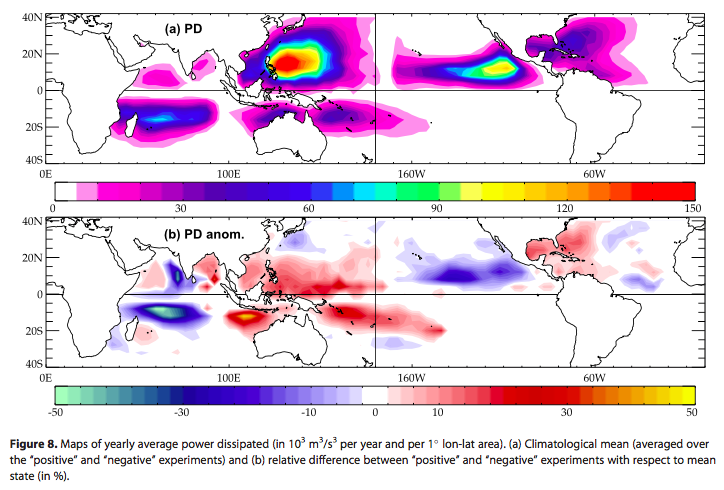Influence of upper-ocean stratification interannual variability on Tropical Cyclones
Abstract
Climate modes, such as the El Niño Southern Oscillation (ENSO), influence Tropical Cyclones (TCs) interannual activity through their effect on large-scale atmospheric environment. These climate modes also induce interannual variations of subsurface oceanic stratification, which may also influence TCs. Changes in oceanic stratification indeed modulate the amplitude of TCs-induced cooling, and hence the negative feedback of air-sea interactions on the TC intensity. Here we use a dynamical downscaling approach that couples an axisymmetric TC model to a simple ocean model to quantify this interannual oceanic control on TC activity. We perform twin experiments with contrasted oceanic stratifications representative of interannual variability in each TC-prone region. While subsurface oceanic variations do not significantly affect the number of moderate (Category 3 or less) TCs, they do induce a 30% change of Category 5 TC-days globally, and a 70% change for TCs exceeding 85 m s−1. TCs in the western Pacific and the southwestern Indian Ocean are most sensitive to oceanic interannual variability (with a ∼10 m s−1 modulation of the intensity of strongest storms at low latitude), owing to large upper ocean variations in response to ENSO. These results imply that a representation of ocean stratification variability should benefit operational forecasts of intense TCs and the understanding of their climatic variability.


